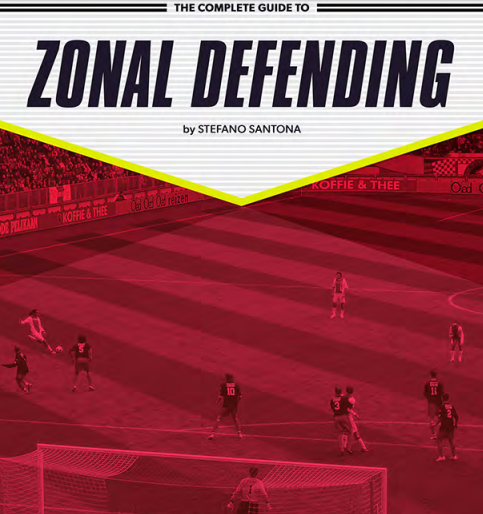Structuring the spaces of the playing field is considered a fundamental component in the process of
creating a competitive football club and it is an essential function of any collective sports team.
Providing structure is manifested through the understanding and occupation of the most appropriate
spaces by the individual athlete and collective team in every situation or problem that appears in the
game, where the individual and team place themselves with the intuition to exploit spacial and
numerical advantage in the various danger zones of the pitch.
In an effort to obtain a structured and cohesive defensive organization, coaches often think of several
different ways to train defences that will become efficient and impenetrable, even though that is a
utopian scenario.
With zonal defending, the team structures itself in a tight shape, with the lines in
close proximity to each other and in accordance with the movement of the ball--which is one of the
primary references of zonal marking.
Keeping in mind that football is a collective sport, it is important
to remember that it is possible to attack through defending and to defend through attacking.
Having
this in mind, it is imperative to think about controlling the game even without having possession of
the ball.
Manipulating the opponent in the different moments of the game at the highest level is a
fundamental ability for the individual player, as well as for the collective team.
In order to better understand the complexity of football, it is necessary to break down the game into
moments, i.e., offensive, defensive, offensive transition, and defensive transition.
Of these moments,
the most critical parts of the game are found in the transitions and the defensive moments. The team
that is in defensive transition or in the defensive moment of the game does not have possession of
the ball, however this does not mean that they are not in control of the game.
It is possible to have
control of the game even without the ball, and, even though it is complex, it is not complicated.
The defensive organization of a team will only be truly collective when the actions performed by
every single one of the eleven players are made towards a common reference or ideal, where the
individual tasks of the players are related, regulated with, and dependent on each other.
It is the only
way that the collective unit will prevail over the individual quality of the units that form the group.
Thus, it is necessary to build principles of the game that define the collective behaviours of the group.
Football is an unpredictable game--it doesn’t allow for planned movements throughout the duration
of a match. Instead,
it is through building principles that the players will obtain an ability to react
effectively in the different situations that the game offers.
Tags:
BOOK PDF

